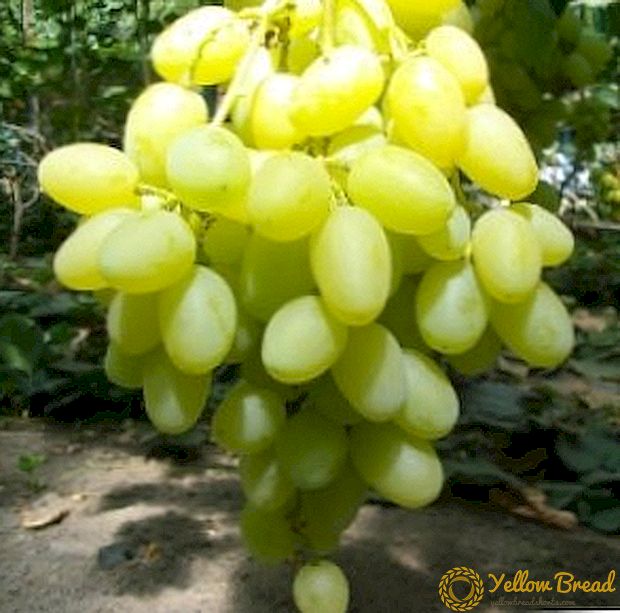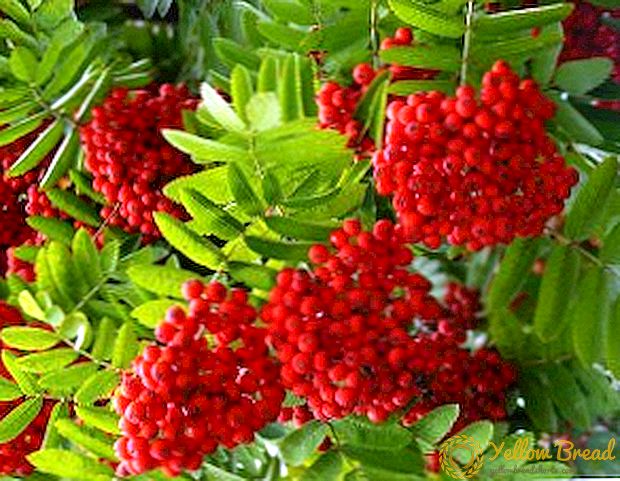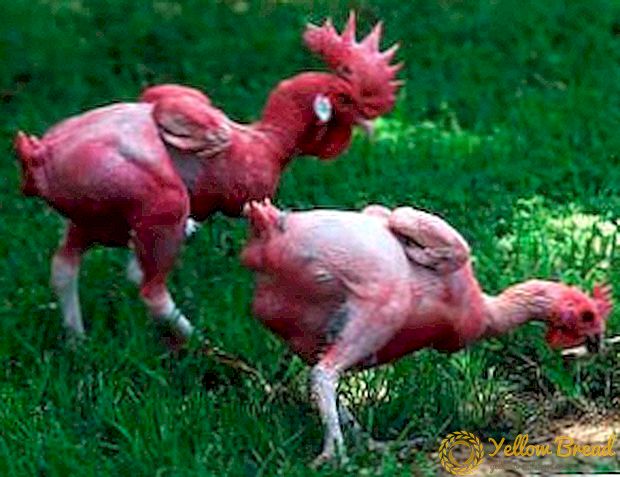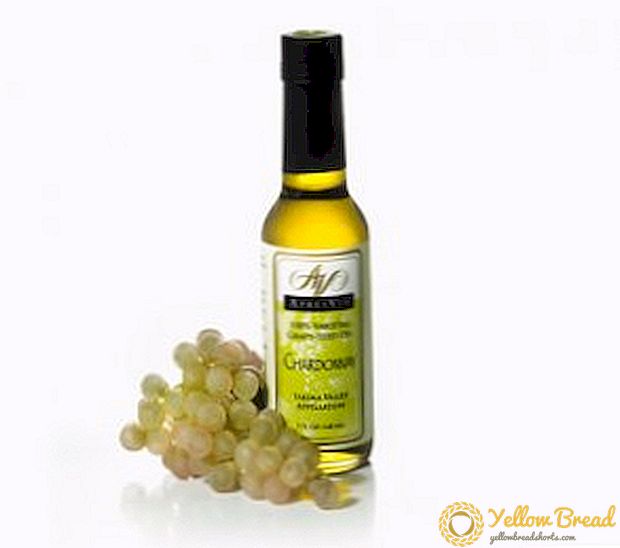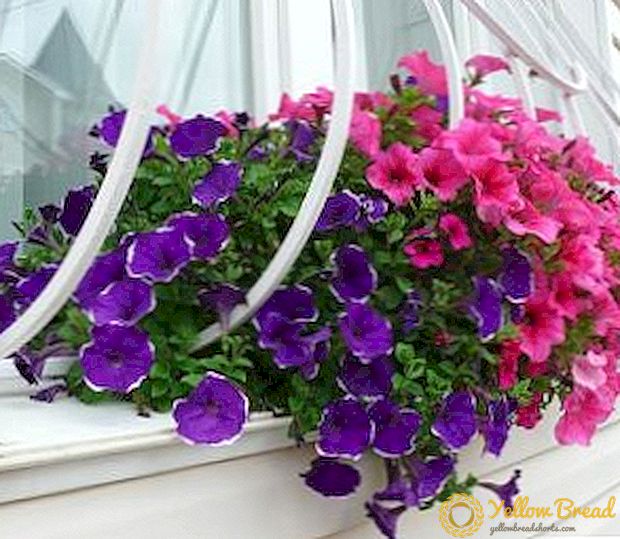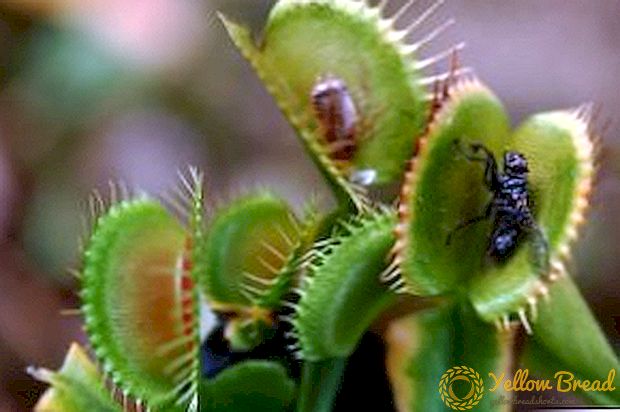 Potatoes have long and deservedly occupied an honorable place in our diet. Many gardeners have no idea how to do without planting this crop on their own plot. The variety of varieties is really impressive, and each of them, at the same time, is incredibly good. Therefore, there are difficulties, which one of them should be given preference in order to achieve good yields without any special efforts and to get a tasty high-quality product at the output.
Potatoes have long and deservedly occupied an honorable place in our diet. Many gardeners have no idea how to do without planting this crop on their own plot. The variety of varieties is really impressive, and each of them, at the same time, is incredibly good. Therefore, there are difficulties, which one of them should be given preference in order to achieve good yields without any special efforts and to get a tasty high-quality product at the output.
Good option for landing - potato "Impala", we suggest to get acquainted with the description of this variety and the features of cultivation and care.
- Description and photo
- Shoots
- Tubers
- Characteristic variety
- Advantages and disadvantages
- Correct fit
- Selection of planting material
- The best place
- Optimal timing
- Landing pattern
- Grade Care
- Diseases and pests
- Useful tips
Description and photo
This early variety appeared thanks to Dutch breeders and has been a leader for a long time. And this is not surprising, because the potato "Impala" is a variety of the highest quality, which can be understood even from the description of the variety.
Shoots
Plant height can reach 75-80 cm. The shrub is very lush, consists of 4-5 erect stems, on which bright green leaves are located, of medium size, with a characteristic wave along the edge of the leaf plate.During the flowering period, white buds bloom on the bush. 
Tubers
The potato has an oval or oval-rounded shape, the weight of one fruit is 100-150 g. The tubers are covered with a thick, smooth skin with a yellowish tinge. Their distinguishing feature is that they have practically no eyes, they are very small, rare and are on the surface. The color of the pulp is yellow or cream. One shrub capable of bringing from 15 to 18 root crops. Potatoes "Impala" contains from 10.5 to 15% of starch.
Characteristic variety
Experts emphasize that the potato "Impala" has positive characteristics in almost all criteria. The variety is designed for dining purposes, its taste is estimated as very good. This potato is most often fried, baked and added to soups: this is due to the fact that during heat treatment the tubers do not change color and retain their shape. 
Advantages and disadvantages
There are plenty of advantages to the variety, and they sound quite convincing for planting it in your garden.
- New potatoes can be harvested as early as 45 days after planting, and 65 days after planting, it fully ripens.
- Good, stable harvest: approximately 50 tons of potatoes can be harvested from a field of 1 ha.
- It can grow both on arid and on sufficiently wet areas.
- For planting this variety fit any soil.
- Very well kept.
- Excellent taste.
- Not afraid of mechanical damage; after the harvest, the trade dress remains in 99% of the root crops.
- It is sufficiently resistant to a number of common diseases.
The disadvantages are practically absent, the only caveat is the average resistance to a number of common diseases, but with the right agrotechnology and they can be avoided. So the pros do not just outweigh the cons, and do not leave them any chance to be disappointed in this plant. 
Correct fit
Timely and proper planting is a guarantee of a bountiful harvest. If you accurately determine the timing and plant high-quality planting material, success is guaranteed.Let's look at everything in order.
Selection of planting material
Preference should be given to planting material that meets the standards of the variety, because the final result will depend on the quality of the tubers. Root crops for planting should not be rot and signs of various diseases. In order to get the crop ahead of schedule, potatoes are germinated. For 2-3 days, the tubers are left in a room with an air temperature of + 20-25 ° C, and then it is necessary that the temperature varies from 11 to 15 ° C, and at the same time light gets on the potatoes.
When sprouts appear on the potato, it is almost ready for planting. Experts recommend to keep also planting material in a solution of potassium permanganate for 30-40 minutes (the solution is prepared at the rate of 1 g of substance per 10 liters of water). Such a procedure is more gentle than chemical treatment, but it also makes the tubers even more resistant to various diseases. After soaking the roots are rolled in wood ash and planted. 
The best place
The most important thing when choosing a place is to observe crop rotation: potatoes are not planted in those places where solanaceous crops such as tomatoes, peppers and eggplants grew in the past season. Planting after legumes, winter crops and perennial grasses would be ideal, in which case you can achieve high yields.
Optimal timing
Landing dates are directly dependent on climatic conditions. Potatoes "Impala" should be planted in the heated land, therefore it is better to navigate according to the weather. Most often, this period falls on April - May. After two months you can harvest. And under favorable weather conditions, you can land the potatoes again.
Landing pattern
Before planting the ground must be well loosened.Depending on the quality of the soil, fertilizers are applied at the site, although this variety is absolutely not picky about the composition of the soil. If, in your opinion, the soil is too poor and depleted, fertilizing organic matter is better to implement. Then the beds are broken, in which planting pits are dug out at a distance of 30 cm from each other, and a distance of 60 cm should be observed between rows. 
To accelerate growth, many vegetable growers make nitrogen fertilizers, but here you need to be extremely careful not to overdo it and not to harm. Planting material is not recommended to be buried too much, and from above it is recommended to fill in 10-15-15 cm of earth crests.
Grade Care
Caring for Impala potatoes differs little from caring for other varieties. It is necessary to regularly weed the beds of weeds and loosen the soil, regular moderate watering is also encouraged. It is believed that water treatments have a favorable effect on the taste of potatoes. In addition, after 7-10 days after planting, it is recommended to apply organic fertilizers - humus, manure or chicken manure, this will contribute to better rooting and accelerating the growth of shrubs. 
Timely treatment of various drugs for diseases and pests is also of great importance, we should not wait for the moment when the plants get sick, but it is much better to take preventive measures. For example, if the summer was too rainy, spraying is carried out with preparations to prevent fungal diseases.
Diseases and pests
If all the rules of planting are followed and the material is well treated, problems with illnesses and pests are rarely encountered. There is a small risk of late blight infection, but given the fact that the tubers ripen very early, the disease can occur only when planting a second crop, so you need to worry in advance aboutto prevent the development of this disease. Also, the plant has an average resistance to scab and leaf twisting virus. 
Regarding pests, the variety "Impala" has no differences from other varieties, therefore, scheduled spraying of tops is carried out.
Useful tips
A few useful tips to ensure that the crop on your site exceeded all expectations:
- When planting, it is desirable to add wood ash to the planting holes.
- Germinated tubers should be planted very carefully, so as not to damage the sprouts.
- Despite the fact that the variety is unpretentious to the soil, a high content of humus in the soil is welcomed.
- 14 days before harvesting you need to cut the tops.
- Never plant potatoes two times in a row at the same place.
As you can see, the Impala variety is absolutely unpretentious and does not require specific knowledge for its cultivation. Therefore, to collect a solid crop under the force even beginner growers.The most important thing: to use quality planting material and timely carry out procedures for the care of him. 

